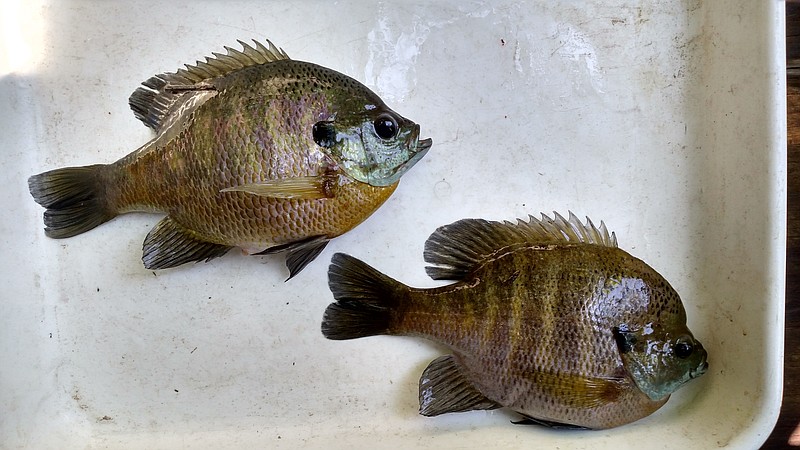Special to The Sentinel-Record
PINE BLUFF -- The time has come to get back into the rhythm of active pond management, Scott Jones, small impoundment Extension specialist at the University of Arkansas at Pine Bluff, said in a recent news release.
While ambitious pond owners monitor and manage their ponds all year long, most casual owners get back into the game starting in spring and into the fall.
"As with lawn care and landscaping, pond management can be as complicated -- and as expensive -- as you want to make it," he said. "But a few simple spring adjustments can help the pond and its fish start the year strong."
Feeding fish
Most fish species begin spawning in the spring, when a pond's water temperature is about 60 to 70 degrees, Jones said. Some species such as bluegill will spawn several times during the summer, however.
"Spawning is an energy-demanding process, so you want your fish well fed before and after for better success and survival," he said.
Jones recommends pond owners keep the following feeding tips in mind:
• Begin feeding fish when the water is above 65 degrees. Continue feeding throughout the summer until the water cools to about 65 degrees in the fall or when fish stop responding to the feed.
• Bluegill grow exceptionally well when fed a floating feed. Catfish, minnows and even grass carp will readily eat fish feed along with bluegill.
• Budget-friendly feeds with 28 to 32 percent protein are acceptable. But remember that fish grow faster on feeds with 36 to 40 percent protein, which are more expensive.
• Feed as much as fish will eat in 5 to 10 minutes, one or two times a day, up to about 15 pounds total per acre per day.
• If feeding once a day, feed fish about one hour before sunset.
"Abundant bluegill populations are usually enough to feed largemouth bass adequately in ponds," Jones said. "However, supplemental stocking of fathead minnows, golden shiners or even goldfish at 5 to 10 pounds per acre or more in the spring will give your bass a boost of nutrition. This will help them bulk up before the spawn and recover more quickly from the process."
Treating weeds
If a pond has a history of aquatic weeds, the weeds have likely already started growing even though they may not be visible, Jones said. Many aquatic weeds begin growing when the water temperature is in the upper 50s to low 60s.
These weeds are most vulnerable to herbicides when they are small and rapidly growing, he said. Treatment options become progressively less effective as the plants get larger and store more energy.
"The best time to start herbicide applications is when the water reaches the mid 60s to low 70s," Jones said. "Be sure to identify weeds correctly before treatment because no single aquatic herbicide is 100 percent effective on all plant species. University of Arkansas Cooperative Extension Service county agents, Arkansas Game and Fish Commission fisheries biologists and UAPB aquaculture and fisheries specialists can help you identify your plants and select effective, safe chemicals."
Fertilizing the pond
Fertilization programs should begin when the water reaches about 65 degrees and should continue until the water drops below about 60 degrees in the fall. Each pond will react differently to fertilizers, so farm pond owners will need to adjust their applications based on how the pond behaves.
"You should only begin a fertilization program if your water alkalinity and hardness are above 20 ppm (mg/L), your water is not consistently muddy, you intend to observe, maintain and manage the resulting plankton bloom throughout the year and you are willing to harvest more fish," Jones said.
Jones recommends pond owners keep the following fertilization tips in mind:
• Typical fertilization rates range from 0.5 to 1.0 gallons per acre for liquid fertilizers and 4 to 8 pounds per acre for powdered or granular fertilizers.
• Ideal pond plankton bloom density should result in 18 to 36 inches of visibility. Once the water visibility is within that range, do not fertilize again until the water clears to more than 36 inches of visibility.
• Over-fertilization is dangerous. It can lead to massive aquatic weed problems, potentially harmful (toxic) blue-green algae blooms and major fish kills.
"Consider your options and goals before you start your spring pond management work," he said. "Ask for help if you want or need it. And be sure to enjoy your aquatic playground as we finally welcome back the spring fishing season."
For more information or tips on farm pond management, call Jones at 870-575-8185 or email [email protected].
